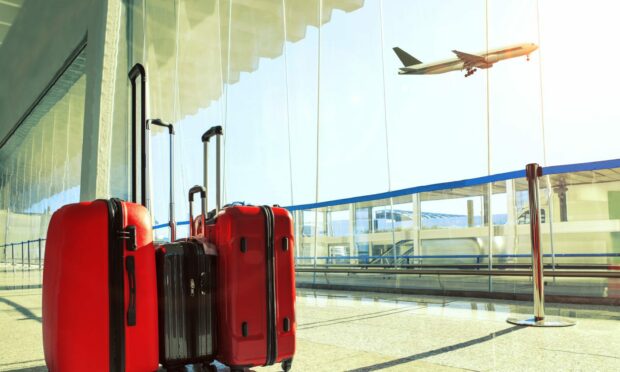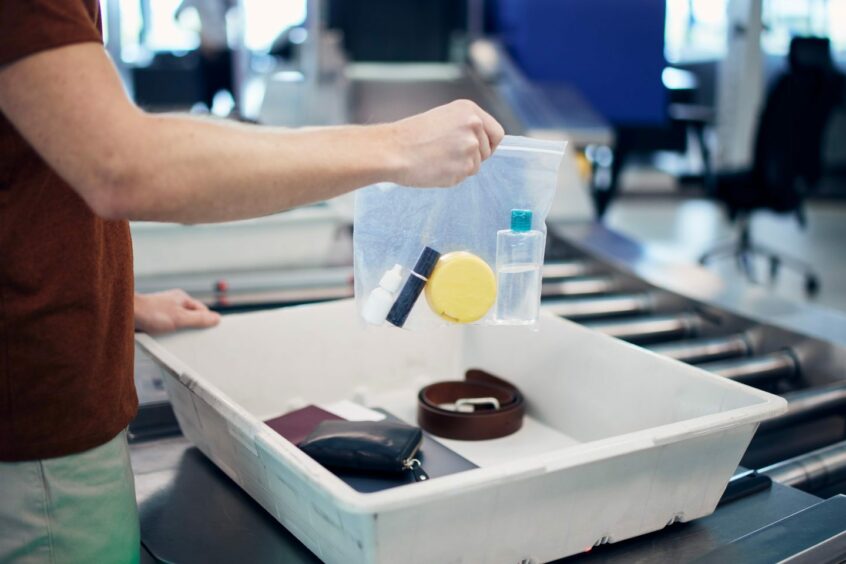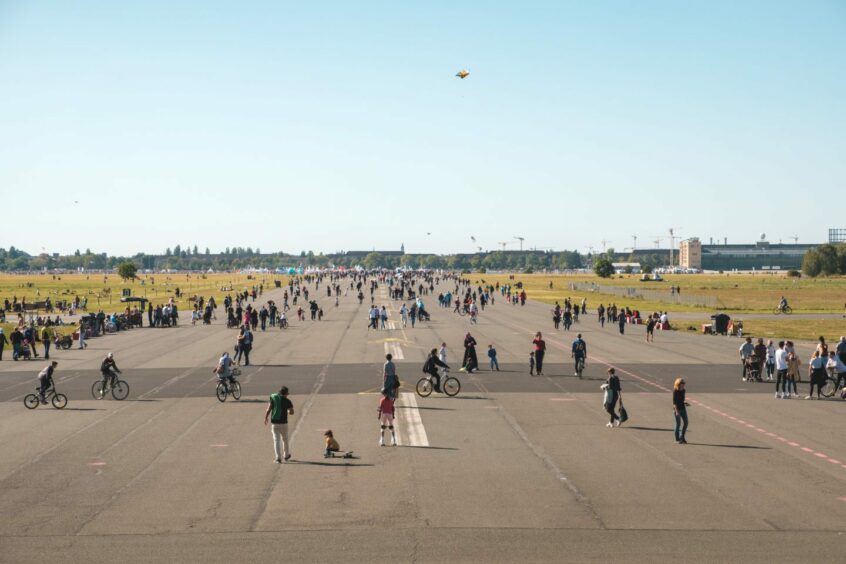Thank heavens the ridiculous Covid rules have long gone when it comes to air travel.
I remember exactly one year ago, I was on a flight to Canada, and just before we landed the pilot made an announcement reminding us to stay two metres apart when in the airport.
I looked at the guy next to me; we had been sitting shoulder to shoulder for nine hours, and were now being told to “social distance” when walking through the airport.
We both shook our heads at the nonsense of it all.
And while I’m at it, remember those ridiculous traffic light systems? Amber, green, red?
Folks having to isolate in hotels at the cost of many of thousands of pounds every time the government flip-flopped and changed the rules regarding arrivals. Disgraceful.
When’s the public inquiry coming? That’s what I’d like to know.
And will there also be an investigation into the rip-off that was Covid tests when returning from abroad? I said at the time in one of my columns: “Someone’s making a lot of money out of this.”
Yup, long gone thankfully are the Covid rules in airports.
That said, it’s still no picnic when using airports these days, and I believe it all changed in the aftermath of 9/11.
You’ve just spent an age at home packing your hand luggage with all manner of things that you used to put into your big case, but of course now you don’t take a check-in case due to the horrendous charges from airlines.
So, it’s all packed up nice and neat, everything from laptops to chargers to phones, to bits and bobs and goodness know what else.
But at security, you’ve got to open your carefully packed bag and tip it all out again and into plastic trays.
Drives me nuts that.
And off comes your belt, and often your shoes, before you go through a full-body scanner. Oh, the joys.
Then there’s the “no liquids over 100ml” rule. Of course, you can buy a bottle of water once through into departures – just remember to take a wad of cash with you to pay for it.
Hang on, here’s a gold star for Aberdeen airport. For they have a water station in departures where you can top up for free. Brilliant. It should be law in every airport.
So next time you depart from Aberdeen, take your own empty water bottle, ignore the shops and their rip-off charges for tiny bottles of water, and go fill up for free. It’s situated in the corner, along from a restaurant. Bottled water prices in airports have to be the biggest con ever.
“I remember when flying used to be fun,” I said. It was meant to be to myself but was obviously loud enough for the security guy to hear. He snorted and replied: “Tell me about it.”
I used to love airports. I enjoyed people watching. I find them a pain now. Just a means to an end. And they’re all the same. Did one guy get the contract to design all the world’s modern airports?
All glass structures, and as for the same shops with over-inflated prices, don’t get me started.
Budapest, where I was based for five years, now has a gleaming brand-new airport. Standing inside, it’s state of the art and highly efficient, but there’s nothing Hungarian about it, no feel whatsoever that you are in Hungary.
With it’s Costa Coffees, McDonald’s and numerous other globalisation brands and glass walls and everything in English, you could be in Heathrow Terminal 5, Stansted, New York, anywhere really. I find that sad.
What’s your view on airports these days? Do you still get an exciting glow being in them? Is it for you the start of a trip somewhere wonderful and do you take full advantage of the shops and restaurants on offer? Do you feel more akin to my view? Do share.
When I moved to Budapest in 2008, you still flew into the old airport. Yes, it was totally Soviet in style, gloomy to look at from the outside, concrete and unwelcoming in some ways, but inside it had old socialist murals on the walls. It had character, it felt “real”. I miss it.
But there is one airport, which has a truly fascinating history, and even though it is no longer in use, you can still visit it.
Tempelhof in Berlin was originally built in 1923, and is one of the world’s oldest civilian airports.
With its Nazi-style terminal buildings, it was once described by British architect Norman Foster as “the mother of all airports.”
Its central terminal is over one mile in length and sits in a space of some 953 acres. It had grand plans, and was meant to glorify Hitler’s huge ambitions. The airport being at the very centre of his new Berlin.
After the war, Tempelhof arguably had its finest moment. With Berlin already divided, Tempelhof found itself in the American-controlled West Berlin. Cut off by the surrounding Soviets, the people had no water, food or fuel.
The Soviets had planned to starve it into submission.
What then took place from Tempelhof was truly extraordinary. The Berlin Airlift.
A supply plane took off or landed at Tempelhof every 45 seconds. This lasted for an astonishing 322 days. Millions of tons of food and vital supplies were delivered, which saved the lives of 2 million West Berliners.
It was been called the largest humanitarian operation in history.
Then in 2015 Tempelhof was used to house Syrian refugees. It was also used as a vaccination centre during Covid, and today it houses Ukrainians fleeing Putin’s war.
The airport is decommissioned now. The last flight landing in 2008.
I’ve flown into Tempelhof once, 2002 if I recall. It was like going back in time and landing behind the Iron Curtain. What an experience.
What has happened to it since decommission? Let it go to rack and ruin? Bulldoze it and turn into another gloomy shopping mall? No, Berliners wouldn’t let them, there would have been outrage, and rightly so.
It’s now basically a huge area open to all. Thousands of people, not just tourists, but Berliners themselves, go there every day. They fly kites, sit and read out on the grass, skate; there’s even a community garden. Festivals and concerts are also held there.
But the best thing about Tempelhof? It must be simply taking a walk down the old runways and just soaking up the history, for here you can sense Nazi Germany and Soviet Berlin all in one place.
It’s been said that no other site captures Berlin’s sense of freedom than Tempelhof. A museum dedicated to the Berlin Airlift is planned for the future.
If you’re off to Berlin any time soon for a long weekend, ignore Checkpoint Charlie, it’s a mass-produced tacky tourist area now. If you’re really interested in Cold War history you simply must go and see the old Stasi jail, Hohenschonhausen. It is chilling.
And of course, I cannot recommend highly enough a trip to Tempelhof airport. For sure, the Brandenburg Gate may well be iconic standing bang right in the heart of the city, but nearby Tempelhof is iconic in its own right.
I was fascinated to learn that Tempelhof didn’t get its name due to its connections with Nazis or the Cold War. It actually dates back hundreds of years.
Apparently, Tempelhof gets its name due to the fact that it was built on a site used by the Knights Templar in the Middle Ages.
There are now guided tours inside the pristine terminal where you can see how little has changed over the decades.
Retro check-in desks and analogue clocks everywhere.
I plan to go there in 2023 and take this inside tour. A column on that and stunning photos coming your way soon.
What a history. What an airport.









Conversation